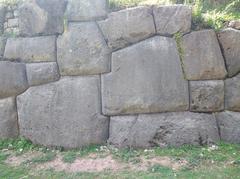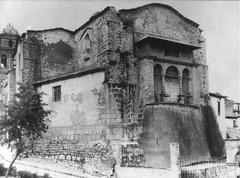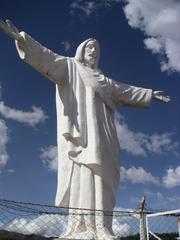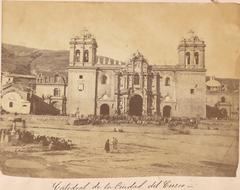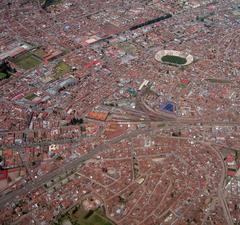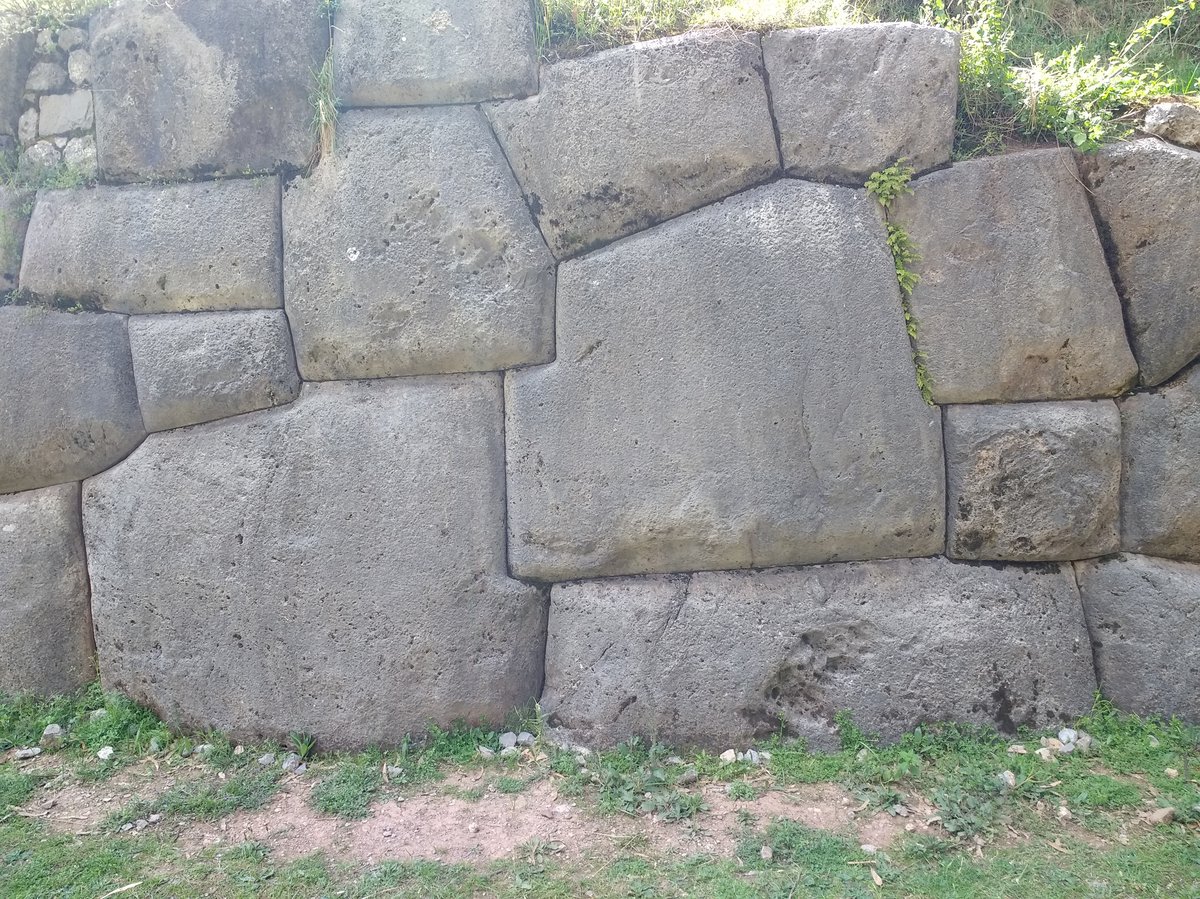
Qenqo (Q’Inqu), Cusco: Comprehensive Guide to Visiting Hours, Tickets, and the Historical Site
Date: 14/06/2025
Introduction to Qenqo (Q’Inqu)
Located just a few kilometers northeast of Cusco’s iconic Plaza de Armas, Qenqo (also known as Q’Inqu, Q’enko, Kenko, or Quenco) is one of the most enigmatic archaeological sites in the region. This ancient sanctuary, whose name means “labyrinth” or “zigzag” in Quechua, is celebrated for its unique blend of natural limestone formations and extraordinary Inca stonework. Qenqo’s ceremonial spaces, carved altars, and intricate underground passages offer visitors a rare glimpse into the spiritual, architectural, and cosmological traditions of the Inca Empire and earlier Andean cultures (Machupicchu Terra; Peru Grand Travel).
As part of the celebrated Four Ruins circuit, Qenqo is often visited together with Sacsayhuamán, Puka Pukara, and Tambomachay. This guide provides up-to-date details on Qenqo’s visiting hours, ticketing, accessibility, site highlights, travel tips, and nearby attractions, ensuring a rewarding and respectful visit (Peru For Less; Tierras Vivas).
Table of Contents
- Introduction to Qenqo (Q’Inqu)
- Historical and Cultural Context
- Site Layout and Main Features
- Visiting Qenqo: Practical Information
- Combining Qenqo with Other Cusco Historical Sites
- Best Time to Visit
- Frequently Asked Questions (FAQ)
- Summary and Visitor Tips
- References and Further Reading
Historical and Cultural Context
Qenqo predates the Inca Empire and was likely a huaca (sacred shrine) for earlier Andean peoples. Later, the Incas adapted the site for ritual worship, primarily dedicating it to celestial deities such as Inti (the Sun) and Mama Killa (the Moon). Its strategic position near Sacsayhuamán and along ceremonial routes underscores its significance in Inca cosmology and administration (Machupicchu Terra; Peru Grand Travel).
Qenqo’s design—marked by labyrinthine passages, carved altars, and symbolic reliefs—embodies the Inca worldview, connecting the earthly (Kay Pacha), underworld (Uku Pacha), and celestial (Hanan Pacha) realms. Rituals involving offerings, sacrifices, and libations were central to the site’s function, reflecting the deep spiritual and agricultural rhythms of the Andes.
Site Layout and Main Features
The Monolith and Zigzag Channels
At the heart of Qenqo is a monumental limestone rock, intricately carved with zigzag channels, steps, and niches. This monolith, measuring approximately 6 meters high and 20 meters long, was used for ritual libations—chicha (corn beer), water, or sacrificial blood would flow through these grooves during ceremonies. The craftsmanship and orientation of the rock suggest advanced knowledge of astronomy and engineering (Peru For Less).
The Amphitheater
Adjacent to the monolith, a semicircular amphitheater—about 55 meters in diameter—is defined by a curved wall featuring 19 trapezoidal niches. Scholars believe these niches held ceremonial objects or offerings, while the amphitheater itself provided space for communal rites and possibly astronomical observation (Peru For Less).
Underground Galleries
Beneath the main rock lies a labyrinthine network of underground galleries, known as chincanas. These passages symbolized the journey between the worlds and were likely used for funerary rituals and offerings. A carved altar within the subterranean chamber (sometimes referred to as the Intihuatana, distinct from Machu Picchu’s) points to its use for mummification and sacred rites (Peru Grand Travel).
Symbolic Carvings
Throughout Qenqo, visitors will find reliefs depicting animals such as monkeys, snakes, and pumas—spiritual mediators in Inca belief. The “Temple of the Monkeys” (Cusillachayoc) is a notable example, showcasing the site’s rich iconography (Machupicchu Terra).
Visiting Qenqo: Practical Information
Opening Hours
Qenqo is open daily from 7:00 AM to 6:00 PM, with last admission typically around 5:00 PM. Early morning or late afternoon visits are recommended for fewer crowds and softer lighting (Tierras Vivas).
Ticketing and Entry
Entry requires the Boleto Turístico del Cusco (Cusco Tourist Ticket), which grants access to multiple archaeological sites and museums. Individual tickets for Qenqo are not available; choose from:
- Full Tourist Ticket: Valid for 10 days, covering up to 16 sites (~130–150 PEN).
- Partial Tourist Ticket: Valid for 1–2 days, covering specific circuits (~70–80 PEN).
Tickets are available at the COSITUC office in Cusco, site entrances, or online through official platforms (in-person purchase is advisable for flexibility). Bring cash and a valid ID (Tierras Vivas).
Accessibility
Qenqo’s paths include uneven terrain, stone steps, and narrow underground passages. While some improvements have been made, the site can be difficult for visitors with mobility challenges. Guided tours can provide tailored assistance and help optimize your visit (Kondor Path Tours).
Getting There
- On Foot: A scenic 30–40 minute walk from Cusco’s Plaza de Armas via Circunvalación road.
- By Taxi: A quick 10–15 minute ride from central Cusco.
- By Bus: Public buses run from the Rosaspata stop; disembark near Sacsayhuamán and walk to Qenqo.
- Guided Tours: Many city and Four Ruins tours include Qenqo, often with transport and guides (Tierras Vivas).
What to Bring
- Comfortable, sturdy walking shoes.
- Sunscreen, hat, and sunglasses.
- Water and light snacks (no vendors onsite).
- Layered clothing for changing weather.
- Camera or smartphone for photography.
Safety and Etiquette
- Respect the archaeological site: Do not climb or deface structures.
- Remain on marked paths.
- Use caution in narrow or low-ceilinged galleries.
- Photography is allowed; drones require special permits.
Guided Tours and Special Events
Hiring a local guide is highly recommended for historical and cultural context. During festivals like Inti Raymi (June 24), expect larger crowds and vibrant ceremonies (Come See Peru Tours).
Combining Qenqo with Other Cusco Historical Sites
Qenqo is ideally explored as part of the Four Ruins circuit, which includes:
- Sacsayhuamán: Massive fortress with zigzagging walls.
- Puka Pukara: The “Red Fortress” with panoramic views.
- Tambomachay: Ceremonial fountains and water worship.
Other nearby attractions:
- Qoricancha (Temple of the Sun): Inca and colonial architecture in central Cusco.
- San Blas District: Artisan quarter with galleries and cafes.
- San Pedro Market: For local produce and crafts.
- Sacred Valley excursions: Pisac, Ollantaytambo, Moray, Maras Salt Mines (Tierras Vivas).
Best Time to Visit
- Dry Season (May–September): Clear skies and minimal rain—ideal for exploring and photography (Best Time To).
- Rainy Season (November–April): Lush landscapes, but expect muddy trails and potential closures.
- Festivals: Inti Raymi (June 24) is a highlight but brings crowds and higher prices.
Frequently Asked Questions (FAQ)
Q: What are Qenqo’s opening hours?
A: Daily from 7:00 AM to 6:00 PM, with last entry typically at 5:00 PM.
Q: How do I get tickets for Qenqo?
A: Purchase the Cusco Tourist Ticket at official offices, site entrances, or online (in-person is easiest).
Q: Is Qenqo accessible for people with disabilities?
A: The site has challenging terrain and steps. Guided tours may assist visitors with limited mobility.
Q: What are the best photographic spots at Qenqo?
A: The monolithic altar, zigzag channels, amphitheater, and panoramic views of the Cusco valley.
Q: Can I visit Qenqo without a guide?
A: Yes, but a guide enhances the experience with historical insights.
Summary and Visitor Tips
Qenqo is a testament to Inca ingenuity, spirituality, and artistry. Its carved monolith, underground chambers, and amphitheater reveal a complex ceremonial landscape that once connected the living with the divine. As part of the broader Cusco archaeological network, Qenqo invites exploration alongside neighboring ruins for a comprehensive understanding of Inca civilization.
- Plan ahead: Buy the Cusco Tourist Ticket and check current hours.
- Dress appropriately: Layered clothing, sturdy shoes, and sun protection.
- Respect the site: Stay on paths and avoid touching carvings.
- Combine visits: Include Sacsayhuamán, Puka Pukara, and Tambomachay in your itinerary.
- Immerse yourself: Consider a guided tour for deeper knowledge.
Conservation efforts continue to protect Qenqo as a UNESCO World Heritage site, ensuring its cultural legacy endures for future generations (Tourist Secrets).
For additional guidance and inspiration, download the Audiala app and follow our channels for up-to-date travel resources and exclusive insights into Peruvian archaeological wonders.
References and Further Reading
- Machupicchu Terra
- Peru For Less
- Tierras Vivas
- Tourist Secrets
- Kondor Path Tours
- Come See Peru Tours
- Best Time To
